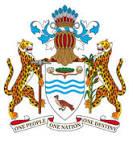Resource information
This Act provides the legal framework for the relationship between landlords and tenants. It consists of 63 sections and is divided into 9 Parts: Preliminary (sects. 12-2); Nature of tenancies and the law applicable thereto (sects. 3-4); Capacity for letting and taking on hire land and buildings (sect. 5); Provisions relating to leases (sects. 6-12); Provisions relating to tenancies generally (sects. 13-19); Recovery of rent by distress (sects. 20-35); Special provisions relating to the landlord’s right of distress for rent (sects. 36-43); Landlord’s duty to repair certain tenements (sect. 44); Recovery of possession of tenement (sect. 45-49); Miscellaneous provisions (sect. 50-63). Section 3 defines various tenancies. Leases that are to carry on for more than three years shall be concluded by deed (sect. 6). Section 7 defines the form and content of a lease.



